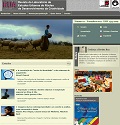Resumo
Em um artigo tornado um clássico da criminologia, Edwin Sutherland sublinhava desde 1940 os benefícios recíprocos que poderiam obter os economistas e os criminólogos de uma melhor integração de seus conhecimentos. Mesmo que seu convite à interdisciplinaridade tenha por objeto o crime do colarinho branco, outras formas de delinqüência sustentam particularmente tal solicitação, dentre elas o “roubo de identidade”. Após ter examinado na primeira parte deste artigo as ambigüidades e paradoxos que pesam sobre as análises contemporâneas do “roubo de identidade”, eu proponho na segunda parte um quadro de análise alternativo que repousa sobre o conceito de coevolução ligando o “roubo de identidade” tal qual nós conhecemos hoje ao desenvolvimento dos novos meios de pagamento a partir do fim dos anos de 1950. Com o auxílio de dados históricos e econômicos, eu mostro como esta transformação fundamental de hábitos de consumo contribuiu para a emergência de novas oportunidades criminosas, ao desenvolvimento de mecanismos de segurança e de procedimentos privados de regulamento dos conflitos, assim como o declínio de outras formas de delinqüência.
Referências
Allison, S., Schuck, A.,&Lersch, K. M. Exploring the crime of identity theft: Prevalence, clearance rates, and victim/offender characteristics. Journal of Criminal Justice, 2005. p.33(1), 19-29.
Arango, C., & Taylor, V. Coûts des divers modes de paiement : L’argent comptant est-il le moyen le moins onéreux pour les commerçants? Revue de la Banque du Canada, Hiver, 2008. p.17-27.
Banque du Canadá. Si l’argent m’était compté. Ottawa: Banque du Canada. 2008.
Baum, K. Identity theft 2004: First estimates from the National crime victimization survey. Washington DC: Bureau of Justice Statistics. 2006.
Berinato, S. Who’s stealing your passwords? Global hackers create a new online crime economy. CIO.com: 17 septembre. Accessible en ligne à: www.cio.com/article/135500. 2007.
Biegelman, M. Identity theft handbook. Hoboken: John Wiley & Sons. 2009.
Cavoukian, A. Vol d’identité: Qui se sert de votre nom? Toronto: Commissaire à l’Information et à la Protection de la Vie Privée. 1997.
Centre Canadien de la Statistique Juridique. Une étude de faisabilité d’améliorer la mesure de la fraude au Canada. Ottawa : Statistique Canada. 2005.
Chabrier, P. Les cartes de credit. Paris: Librairies Techniques. 1968.
Chutkow, P. Visa: The power of an idea. Chicago: Harcourt. 2001.
Cohen, S. Folk devils and moral panics: The creation of the Mods and Rockers. St Albans: Paladin. 1972.
Copes, H., &Vieraitis, L. Identity theft: Assessing offenders’ strategies and perceptions of risk. Birmingham: University of Alabama. 2007.
Drury, T., & Ferrier, C. Credit cards. Londres: Butterworths. 1984.
Dupont, B. Résultats du premier sondage sur le vol d’identité et la cybercriminalité au Québec. Québec : Ministère de la Sécurité Publique. 2008.
Ehrlich, P., & Raven, P. Butterflies and plants: A study in coevolution. Evolution, 1964. p.18(4), 586-608.
Evans, D., & Schmalensee, R. Paying with plastic: The digital revolution in buying and borrowing. Cambridge: MIT Press. 2005.
Ferguson, N. The ascent of money: A financial history of the world. Londres: Penguin Books. 2008.
Finklea, K. Identity theft: Trends and issues. Washington DC: Congressional Research Service. 2009.
Gordon, G., Rebovitch, D.,Choo, K. S., & Gordon, J. Identity fraud trends and patterns: building a data-based foundation for proactive enforcement. Uttica College: Center for
Identity Management and Information Protection. 2007.
Grossman, P. American Express: The unofficial history of the people who built the great financial empire. New York: Crown Publishers. 1987.
Interac. Interac celebrates 25 years of connecting Canadians to their money. Toronto: Interac. Accessible en ligne à :http://www.interac.ca/media/press_25.php. 2009.
Jones, G., & Levi, M. The value of identity and the need for authenticity. Londres: DTI Office of Science and Technology. 2000.
Koops, B.-J., Leenes, R., Meints, M., van der Meulen, N., &Jaquet-Chiffelle, D.-O. A typology of identity-related crime. Information, Communication and Society, 2009. p.12(1), 1-24.
Marron, D. ‘Alter reality’ Governing the risk of identity theft. British Journal of Criminology, 2008. p.48(1), 20-38.
Monahan, T. Identity theft vulnerability: Neoliberal governance through crime construction. Theoretical criminology, 2009. p.13(2), 155-176.
Morriss, A.,&Korosec, J. Private dispute resolution in the card context: Structure, reputation and incentives. Journal of Law, Economics and Policy, 2005. 1: p.393-472.
Newman, G., & Clarke, R. Superhighway robbery: Preventing e-commerce crime. Cullompton: Willan. 2003.
Newman, G., & McNally, M. Identity theft literature review. Washington DC: US Department of Justice. 2005.
Ohm, P. The myth of the superuser: Fear, risk and harm online. UC Davis Law Review, 2008, 41(4), 1327-1402.
Pontell, H., Brown, G., &Tosouni, A. Stolen identities: A victimsurvey. In M. McNally et G. Newman (Eds.), Perspectives on identity theft (57-85). Monsey: Criminal Justice Press. 2008.
Pontell, H. Identity theft: bounded rationality, research and policy. Criminology & Public Policy, 8(2), p.263-270. 2009.
Saunders, K. , &Zucker, B. Counteracting identity fraud in the information age: The Identity theft and assumption deterrence act. International Review of Law, Computers and Technology, 13(2), p.183-192. 1999.
Sproule, S., & Archer, N. Measuring identity theft in Canada: 2008 consumer survey, MeRC working paper no. 23. Hamilton: McMaster University. 2008.
Stone, B. Global trail of an online crime ring. The New York Times, 11 août, A1. 2008.
Sutherland,E. White-collar criminality. American Sociological Review, 5(1), 1940. p.1-12.
Symantec. Symantec report on the underground economy. July 07 – June 08. Cupertino: Symantec. 2008.
Taylor, V. Tendances en matière de paiement de detail et resultants d’un sondage mené auprès du public. Revue de la Banque du Canada, Printemps, 2006. p.27-40.
Thibodeau, P. Creditcardthievesran a polite, professional help desk. Computerworld: 6 août. Accessible en ligne à: http://www.networkworld.com/news/2008/080708-credit-card-thieves-ran-a.html. 2008.
Tremblay, P. Designing crime: The short life expectancy and the workings of a recent wave of credit card bank fraud. British Journal of Criminology, 26(3). 1986. p.234-253.
Vermeij, G. The evolutionary interaction among species: Selection, escalation, and coevolution. Annual Review of Ecology and Systematics, 25, 1994. p.219-236.
O periódico RUA utiliza a licença do Creative Commons (CC), preservando assim, a integridade dos artigos em ambiente de acesso aberto.

